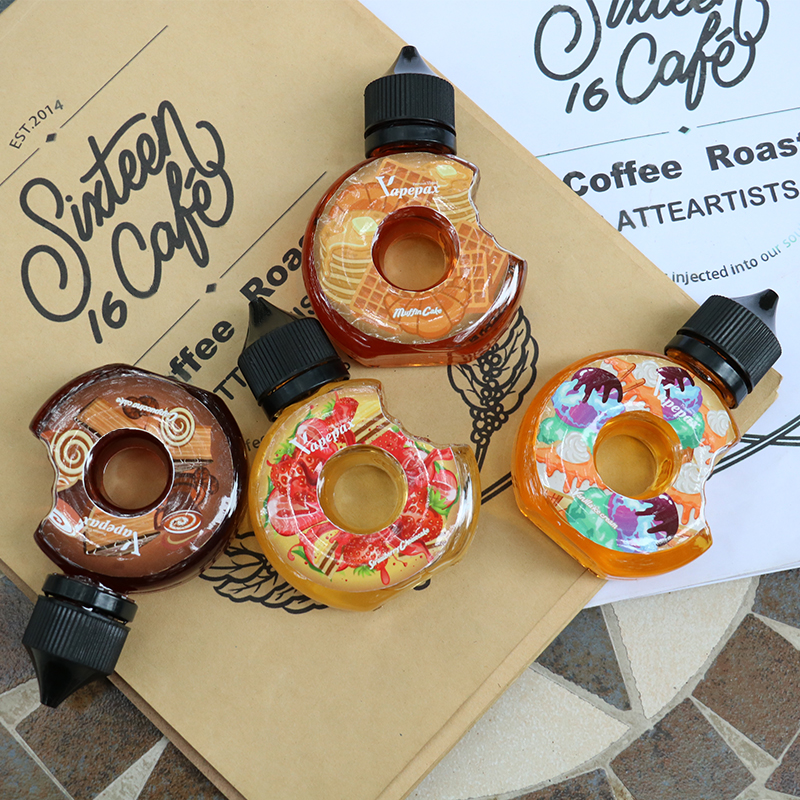Why Replicating E-Liquid is So Difficult
As the core of vaping, the quality of e-liquid directly impacts the user's experience. Therefore, both e-liquid manufacturers and vape device makers place great emphasis on the performance of e-liquid, as it is the most crucial factor in attracting customers. But how can the performance of an e-liquid be assessed? It’s not just the opinion of flavorists or tasters that counts; market feedback is the ultimate judge. Consequently, a best-selling e-liquid flavor becomes the benchmark for good performance, and replicating such an e-liquid becomes a shortcut for businesses to break into the market.

However, replicating e-liquid is an extremely challenging task. Even under the best conditions, achieving an 80% similarity is difficult, and creating an almost identical copy is akin to finding a needle in a haystack, relying heavily on luck. So, why is replicating e-liquid so hard? This article will explore this question through several key factors.
Complexity of E-Liquid Composition
First, the complexity of e-liquid composition is one of the main reasons for the difficulty in replication. E-liquid typically consists of flavorings, vegetable glycerin (VG), propylene glycol (PG), nicotine, and other additives. The precise proportions of these components determine key characteristics such as taste, vapor production, and throat hit.
Flavorings: The types and quality of flavorings directly affect the taste of e-liquid. The flavor of each type of flavoring can vary due to differences in brands and production batches. The proportions of flavorings often require fine adjustments based on the mixer’s experience, making replication extremely difficult.
VG and PG: VG and PG are the primary bases of e-liquid. VG is mainly responsible for producing vapor, while PG conveys flavor and throat hit better. Their ratio directly impacts the vaping experience. To replicate precisely, one must fully understand the VG and PG ratio in the original e-liquid and blend it accurately.
Nicotine: The nicotine content not only affects the throat hit but also subtly influences the overall flavor. The purity and quality of nicotine from different brands vary, adding to the challenge of replication.
Additives: Some e-liquids contain additional ingredients like coolants or sweeteners. The types and quantities of these additives must be precisely controlled, or the replica will differ significantly from the original.
Variations in Raw Material Quality
Second, variations in the quality of raw materials are also a significant factor in the difficulty of replication. The flavorings, VG, PG, and nicotine used in e-liquids come from different suppliers, and the quality and characteristics of these materials can vary.
Flavoring Differences: Flavorings from different manufacturers have subtle taste differences. Even the same type of flavor can produce different sensory experiences due to variations in production processes and raw material sources.
Purity of VG and PG: The purity of VG and PG directly affects the stability and flavor performance of e-liquid. VG and PG from different suppliers may contain varying levels of impurities, which can produce different chemical reactions when heated, thereby influencing the e-liquid’s flavor.
Quality of Nicotine: The purity and quality of nicotine also affect the final taste of the e-liquid. High-quality nicotine provides a more authentic throat hit, while low-quality nicotine might introduce off-flavors and even health concerns.
High Technical Barriers in Flavor Mixing and Tasting
Lastly, the technical barriers in flavor mixing and tasting also make replicating e-liquid challenging. Creating high-quality e-liquid requires not only precise knowledge of proportions and raw materials but also exceptional mixing and tasting skills.
Mixing Techniques: Flavorists need extensive experience and a keen sense of smell to blend complex flavors. It’s not just about simple proportions; it involves the interactions between different flavorings and their final presentation.
Tasting Abilities: Tasting involves evaluating e-liquid through smell and taste. Skilled tasters can identify subtle differences in e-liquid flavors and adjust accordingly. This ability often requires long-term training and practical experience.
In summary, the difficulty in replicating e-liquid lies mainly in the complexity of the composition, variations in raw material quality, and high technical barriers in mixing and tasting. These factors together make it challenging even for experienced flavorists to fully replicate the taste of the original e-liquid. While there are many replica e-liquids on the market, very few achieve high similarity. This not only highlights the difficulty of replication but also reflects the technical and quality advantages of original products. For consumers, choosing high-quality original e-liquid remains the best guarantee for an optimal vaping experience.



 Prev:How to Enhance Your Vaping Experience
Prev:How to Enhance Your Vaping Experience Next: Tapping the potential of vape requires suitable...
Next: Tapping the potential of vape requires suitable...


